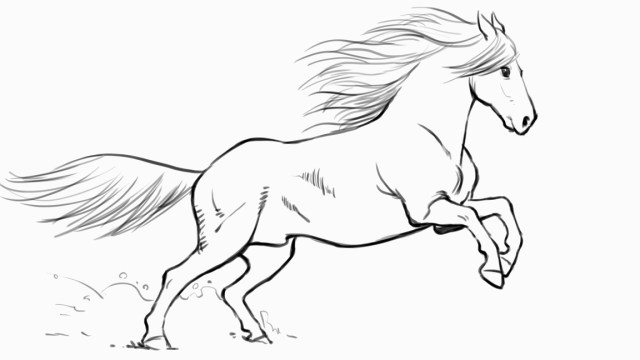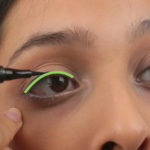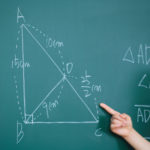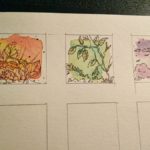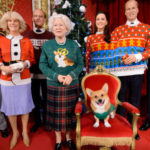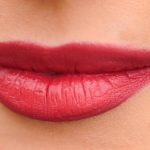How to draw: the best drawing tutorial
If you want to know how to draw there are 7 very fundamental things to make your drawing extra ordinary even if you think you can’t draw at all. This article on how to draw is independent on the tools you choose for your drawing. Everything is true for pencils as well as for watercolor, oil or ink. Just choose the tools of your liking.
Special Tip: Exercise
Yep, I made this one a drawing tip. Some people seem to think they just sit down and draw a master piece which means they can draw or it will come out as crap which means they can not draw. Just because the only thing you need to draw is a pen.
Well truth to be told there are some genius painters that just happen to paint one master piece after another but they are the exception. That’s the same for every kind of skill or art. Certainly you’ve all heard about Mozart, yet nobody thinks that they could just sit down at a piano and play like Mozart did (and even though Mozart was a genius he still did practice every single day for hours).
Just because the tools for drawing are simple it does not mean it is simple to use them. So, if you really want to learn how to draw start with simple things and draw them over and over and over again. Don’t start with people. Start with inanimate objects. Apples, bananas, chairs and jewelry make for a great beginning and anybody has access to them.
1. Drawing Ideas
The very first thing you need to draw are some drawing ideas. For the most part people just think “hey I want to draw – but what to draw?” then they sit down and just start with “something” but they’re surprised and disappointed by the outcome. Did you ever walk into a kitchen and just started cooking without even knowing what kind of meal you were cooking? Chances are you didn’t. And even if you did you certainly wouldn’t be surprised if you didn’t have the necessary ingredients at hand. And of course you wouldn’t be disappointed if the chocolate-roastbeef-jellybeans taste as horrifying as they look.
The same is with drawing. If you don’t know what to draw, think about the emotion that you would like to create. Then try to come up with pictures that create this emotion in you. Of course there will be a lot of drawing ideas popping up. If you’re just starting out choose some easy drawings, for the beginning those pictures with the simplest and the fewest objects otherwise go with the one you like the most ![]()
2. Shape
Everything start’s with a shape. The closer you get the initial shape to reality the better your result will be. Drawing is about observation. Take close look at the thing you want to draw and try to see the shapes it is made off. Even look at the air surrounding the object try to imagine the surrounding space as object itself (this is called negative space) and which shapes it consists of.
Do not use black lines for the shape. No real object has black lines only comic characters do. Look as your forearm. Do you see a black line? No. Objects “edges” are visible because they have different colors and patterns than their surrounding. Put a white bucket in front of a white wall and you can barely see it. The part you actually do see is due to light and shadow. Hence choose a pencil for your initial shape which you can erase later on and do not use much pressure. The more pressure you use the more difficult it will be to erase the pencil.
3. Background
Most people start by drawing their objects or people on a white sheet of paper. Once the object ist done they think they’ve finished their work. That’s not true. Maybe your object is the most important thing in the picture that you want to draw. But in reality nothing exists in empty space (nothing that lives on this planet anyways). Everything has a background.
With background I don’t mean painting a solid background (grey/pink/green/blue) consisting of one color or going for some sort of gradient. That’s the lazy way and who does this doesn’t get to the point.
Everything has a context in which it does exist. Taking it out of the context means killing its soul. If you draw a rose it can be as beautiful as you want but without a context it doesn’t mean anything. For example you could place the rose in the hands of a beautiful girl who is taking a smell on it with closed eyes and a soft smile. This is a very different picture opposed to a rose resting on a tombstone the shadow of a crying man right beside the grave.
Context is everything. So don’t let your object or person live in empty space. Give it some context to speak to the viewer, give it a meaningful background.
Start with the background and use a piece of scrap paper to put under your hand to make sure you don’t smudge anything especially once you’re done with the background and go ahead with the really important part: your object of choice.
4. Color
Everything has a color. Yes some things are black, some things are white but most things have color. And they usually dont just have one solid color but at least shades of that one color. Like logs of trees seem all brown but there are light browns and dark browns and even some greens in it – you get the point. Put some color in your drawing
5. Pattern And Texture
Almost everything has a pattern. It’s most obvious with clothes and wallpapers but it is also true for animals and plants and everything you can put your eyes on. Just look out your window and pick a random thing. What pattern do you see?
Nevertheless most people choose solid colors for their drawing. Look at those children comics that are on TV everything has one solid color. That’s why it doesn’t look realistic. It’s so easy to just add some pattern and create a more realistic and even comforting look. The pattern does not have to be busy it can even be barely visible.
I hear you say “Not everything has a pattern, there are one-colored-clothes out there” yes there are clothes that look all black or all yellow but that’s only because you’re so used to it that you don’t really look at them. If you do take a closer look you will see the structure that’s imposed to them due to the material they are made of.
This structure is called texture. And although there might be some things that seem to be monochromatic they still have texture. If somebody would take out a photo of skin – just skin, no shape, no specific bodypart, no context, just skin. You would still recognise that it’s skin because of the texture it has. So add some texture and be sure that your drawings will look much nicer to the viewer although the viewers might not be able to put their finger on why exactly this image looks so nice.
6. Draw Light And Shadow
Every real thing has depth because it is three dimensional. That’s why you should always add depth to your drawing.
The first step to create depth is to pay attention of the shape of things. If you look at a table it seems to get narrower at the far end, and this fact does affect every 3D-object. Just look closely and you will see what makes things look 3 dimensional. If you can’t figure out how to draw one specific thing three dimensional just grab your camera take a picture of it and try to copy it (great exercise!).
If you can see “something” that means that there is light – even if it’s just a tiny little bit light – because without light our human eyes do not work. Hence you want to add light to your drawing to make it more realistic. Choose one direction where the light is coming from and paint exposed areas lighter then the rest of the picture.
Where there’s light, there’s shadow. The more darkness you add to your picture the more depth you are going to get. You can treat shadows as if there is a “light source” emitting “black light” right opposite to the real light source.
To improve your drawing pay close attention to reality, look at real objects and try to figure out where they are shiny and light and where shadows impose their darkness on them.
7. Drawing Details
Pattern is a detail. Texture is a detail. Light and Shadow are both details. But that’s not all the detail there is.
You know those kid printings of a tree where they just draw a straight line for the log and a circle for the treetop? Did you ever have a close look at a tree? They look not even close to those child drawings, which is okay since children are just starting off and they just begin to exercise. But a real tree has branches and twigs, bark and knotholes, buds and leaves – a tree is living. And it doesn’t end with the parts of a tree. If you look at a tree you will never see just a tree, there will be bugs and bees, birds and butterflies, squirrels and snails and even more because the tree is their home – because the tree lives.
The same goes for people. If you draw a person you (usually) don’t draw him/her naked. Nevertheless most drawings just show them in pants and T-Shirt and that’s about it. Is that all you wear? Add jewelry and accessories like bags and scarfs and shoes and belts and cellphones and freckles and scars and glasses and hair ties and bows and ribbons and ties and – well, anything you can think of that fits the character.
With every detail you add to your picture you add beauty and love and that’s what the viewer will respond to. “Wow I love the detail” or “OMG did you see that tiny little detail” that’s the kind of response that you will earn once you start adding details to your drawing.
Drawing is fun because of details!
Now that you know the very fundamentals on how to draw just grab a pencil get some ideas and then get started. Never forget the most important thing: have fun!
